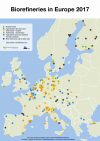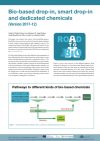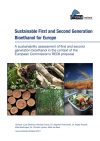Showing 221–240 of 423
-
nova-Paper #10: Renewable Carbon is Key to a Sustainable and Future-Oriented Chemical Industry − Langfassung
Markets & Economy, Policy
11 Pages
1084 Downloads
1084 Downloads
2018-08
FREE
1084
Downloads -
nova-Paper #10: Renewable Carbon is Key to a Sustainable and Future-Oriented Chemical Industry − Graphic
Markets & Economy
585 Downloads
585 Downloads
2018-08
FREE
585
Downloads -
nova-Paper #10: Renewable Carbon is Key to a Sustainable and Future-Oriented Chemical Industry − Full version
Markets & Economy, Policy
11 Pages
2189 Downloads
2189 Downloads
2018-08
FREE
2189
Downloads -
15th International Conference of the European Industrial Hemp Association 2018 − Proceedings
Markets & Economy
18 Downloads
18 Downloads
2018-06
FREE
18
Downloads -
Bio-based Building Blocks and Polymers – Global Capacities and Trends 2017-2022 − Graphics
Markets & Economy
603 Downloads
603 Downloads
2018-05
FREE
603
Downloads -
Bio-based Building Blocks and Polymers – Global Capacities and Trends 2017-2022 − Short version
Markets & Economy
16 Pages
3208 Downloads
3208 Downloads
2018-05
FREE
3208
Downloads -
Bio-based Building Blocks and Polymers – Global Capacities and Trends 2017-2022
Markets & Economy
184 Pages

2018-05
100 € – 500 €Price range: 100 € through 500 € ex. tax
Plus 19% MwSt.Press
release Select
licenceStrong growth in bio-based building blocks and moderate growth in bio-based polymers
New comprehensive market and trend report “Bio-based Building Blocks and Polymers – Global Capacities and Trends 2017-2022” published by German nova-Institute
The production capacities of bio-based polymers continue to grow at around 3 to 4% per annum, i.e. at about the same rate as petrochemical polymers. Therefore, the market share of bio-based polymers in the total polymer market remains constant at around 2%. But the individual development of different bio-based polymers varies considerably. While some are virtually collapsing compared to previous forecasts (e.g. bio-PET), many are showing constant or slightly increasing capacities and a few are even showing significant growth (such as PLA). Additionally, for some bio-based polymers such as PHA, PEF, bio-PE and bio-PP, the prospects for the future are quite positive. Overall, the market environment remains challenging with low crude oil prices, little political support and partially underutilized capacities. Until now, the biodegradability of some bio-based polymers has not yet been able to generate a real advantage globally.
The new report is more than just an update, it differs from the previous versions in structure and content. It contains comprehensive information on capacity development from 2011 to 2022, per building block and polymer as well as information on 102 individual polymer producers. A total of 17 bio-based building blocks and 15 polymers are covered in the report. In addition, the new issue includes analyses of market developments per building block and polymer, so that readers can quickly gain an overview of developments that go far beyond capacity figures.
-
Bio-based Building Blocks and Polymers – Global Capacities and Trends 2017-2022 − Content
Markets & Economy
10 Pages
1233 Downloads
1233 Downloads
2018-05
FREE
1233
Downloads -
Proceedings 11th International Conference on Bio-based Materials 2018
Markets & Economy
32 Downloads
32 Downloads
2018-05
FREE
Plus 19% MwSt.Free Shipping32
Downloads -
1148 Downloads
2018-04
FREE
1148
Downloads -
6th Conference on Carbon Dioxide as Feedstock for Fuels, Chemistry and Polymers 2018 Proceedings
Markets & Economy
85 Downloads
85 Downloads
2018-03
FREE
Plus 19% MwSt.Free Shipping85
Downloads -
Natural fibre-reinforced plastics: establishment and growth in niche markets − Full version
Markets & Economy
4 Pages
982 Downloads
982 Downloads
2018-03
FREE
982
Downloads -
“InnProBio project: Informative factsheets about the most pressing issues” − Handbook on the public procurement of bio-based products and services
Markets & Economy
44 Pages
807 Downloads
807 Downloads
2018-03
FREE
807
Downloads -
Succinic acid: New bio-based building block with a huge market and environmental potential? − Preview
Markets & Economy
6 Pages
1219 Downloads
1219 Downloads
2018-02
FREE
1219
Downloads -
nova-Paper #9: The “Circular Bioeconomy” – Concepts, Opportunities and Limitations − Full version
Policy
9 Pages
6988 Downloads
6988 Downloads
2018-01
FREE
6988
Downloads -
29 Downloads
2017-12
FREE
29
Downloads -
2155 Downloads
2017-12
FREE
2155
Downloads -
Bio-based drop-in, smart drop-in and dedicated chemicals − Full version
Technology
3 Pages
1000 Downloads
1000 Downloads
2017-12
FREE
1000
Downloads -
BIOVERBUNDWERKSTOFFE Naturfaserverstärkte Kunststoffe (NFK) und Holz-Polymer-Werkstoffe (WPC) − Langfassung
Markets & Economy, Technology
56 Pages
931 Downloads
931 Downloads
2017-12
FREE
931
Downloads -
Sustainable First and Second Generation Bioethanol for Europe − Full version
Policy, Sustainability & Health
43 Pages
1612 Downloads
1612 Downloads
2017-11
FREE
1612
Downloads


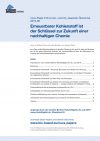

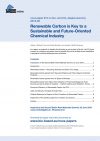
![15th International Conference of the European Industrial Hemp Association 2018 − Proceedings [Digital]](https://renewable-carbon.eu/publications/wp-content/uploads/2020/05/21-01-07_RC-Publications-Cover-Proceedings_EIHA-100x141.png)

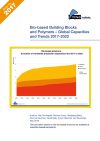
![Bio-based Building Blocks and Polymers – Global Capacities and Trends 2017-2022 [Digital]](https://renewable-carbon.eu/publications/wp-content/uploads/2020/07/18-05-biopolymer_markets_2017-2022-100x141.jpg)
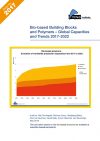
![Proceedings 11th International Conference on Bio-based Materials 2018 [Digital]](https://renewable-carbon.eu/publications/wp-content/uploads/2020/05/21-01-07_RC-Publications-Cover-Proceedings_Bio-based-Materials-100x141.png)
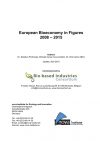
![6th Conference on Carbon Dioxide as Feedstock for Fuels, Chemistry and Polymers 2018 Proceedings [Digital]](https://renewable-carbon.eu/publications/wp-content/uploads/2020/05/21-01-07_RC-Publications-Cover-Proceedings_CO2-based-100x141.png)
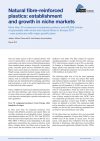
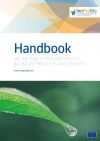
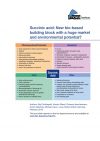
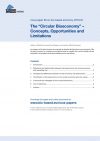
![Proceedings Biocomposites Conference Cologne 2017 [Digital]](https://renewable-carbon.eu/publications/wp-content/uploads/2020/05/21-01-07_RC-Publications-Cover-Proceedings_Biocomposites-100x141.png)
